During the British rule of India, banknotes were issued for Burma by the Indian government. Burma did not issue its own banknotes until it was annexed by the British Empire. This annexation occurred after three Anglo-Burmese Wars, and Burma was subsequently made a province of India.
Indian banknotes came into use in Burma after the British occupied Lower Burma in 1824.
Burma was separated from the Indian Empire, following the Government of India Act that came into force in 1935. Despite this separation, the Indian government continued to control Burma's finances. Consequently, the Central Monetary Authority of India issued banknotes that were valid in Burma.
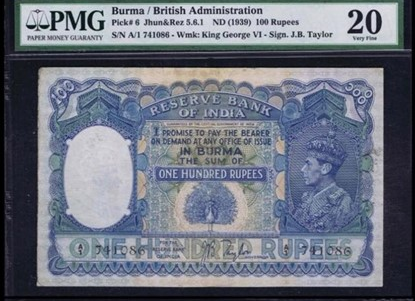
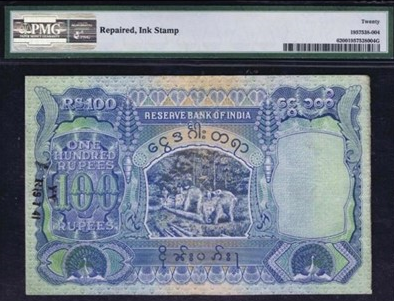
This is a unique occurrence in the history of banknotes, being the only case where one country issued valid banknotes during its civil rule in another country. To fulfill the need for banknotes in Burma, the Reserve Bank of India issued an initial overprinted series, followed by a special series of 'Burma notes' in 1937, also known as 'Peacock Notes'. These banknotes were available in denominations of 100, 1000, and 10,000 rupees.
The top center of the obverse of the banknote displayed the name of the issuer, "Reserve Bank of India."

On the right side was a vignette of King George VI, and a watermark of the king was visible in the left watermark window.

The center of the note had an overprinted promissory note that read, "I promise to pay the bearer on demand at any office of the issue in Burma the sum of."
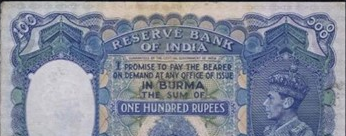
The denomination of the banknote, which was one hundred rupees, was printed at the center, below which was an illustration of a dancing peacock.
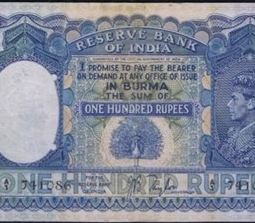
The monetary value description, "one hundred rupees," was printed in large type as an underprint at the bottom.
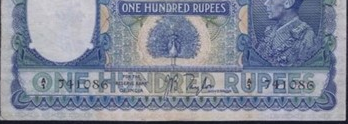
Click here to view other articles in this series